When walking through the woods the silence is often pierced by the rapid chatter of a red squirrel as I intrude upon its territory. But the recent deep blanket of snow has the little red squirrel snug inside its nest.
Red squirrels will sleep in tree cavities, abandoned bird nests, under rotten logs or, most commonly, in dreys. Dreys are nests squirrels build out of leaves, sticks, grass or needles. They are spherical in shape with an inner chamber four to six inches across. A drey can be distinguished from a bird’s nest because of the presence of dried leaves and its spherical shape.
The inside of the chamber is lined with soft material, such as shredded bark, bird feathers, animal fur or dried grass. Squirrels will keep adding material to the outside of the nest to insulate and waterproof it.
With a few inches of material separating the inner chamber from the outside air, the temperature on the inside of the nest is several degrees higher than on the outside. To increase the insulating factor, squirrels often construct the dreys on the south side of a tree to maximize the warmth of the sun.
Often a squirrel will build the drey high in a tree above one of it’s middens, of which the squirrel can have as many as six middens. A midden is the squirrel’s cache of cones that it eats during winter when other food is scarce.
These middens and the associated cone trees make red squirrels one of the most territorial animals in the forest. Their chatter, screams, growls and screeching make their territory well known to intruders.
Squirrels will also mark their territory by leaving their scent along frequently used paths. Glands in their cheek leave a scent when rubbed against an object.
Once snow covers the ground, squirrel trails become obvious–a tiny packed trail between trees. If the snow is deep, the tracks may disappear at the tree trunk and delve beneath the snow to a midden or up the tree to a drey.
Unlike other small rodents, red squirrels nest above the snow high in a tree, whereas mice and voles spend the winter in the subnivean space beneath the snowpack. The temperature is more moderate between the ground and the snow, making winter easier to survive for those rodents.
Not so for the little red squirrel. During inclement weather, a squirrel will hole up in its drey, lowering its rate of energy expenditure. With a cache of cones nearby and the capability to obtain dietary moisture from its food, the squirrel doesn’t have to travel far in the winter.
But when the squirrel does travel in the warmer months to harvest food and feast on berries, fungi, buds, and seeds, its stays within its home range. Depending on the abundance of food, their home range can range from 0.7 acres to 3.7 acres.
Any intruder into a squirrel’s home range will receive a long scolding if he comes to close to a midden, breaking any silence that might have been.

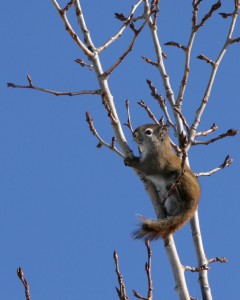
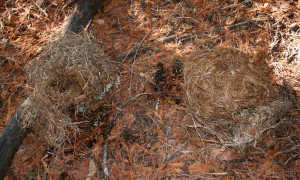
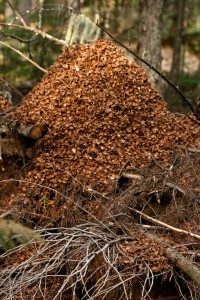
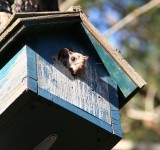
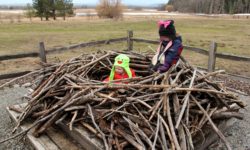
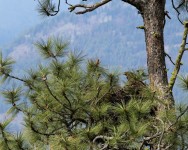
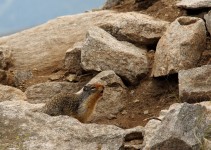
Do these North Central Idaho squirrel’s eat birds, like sparrow’s?